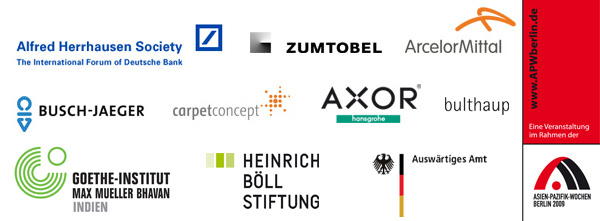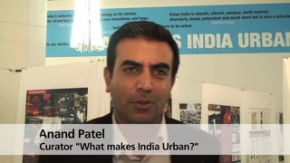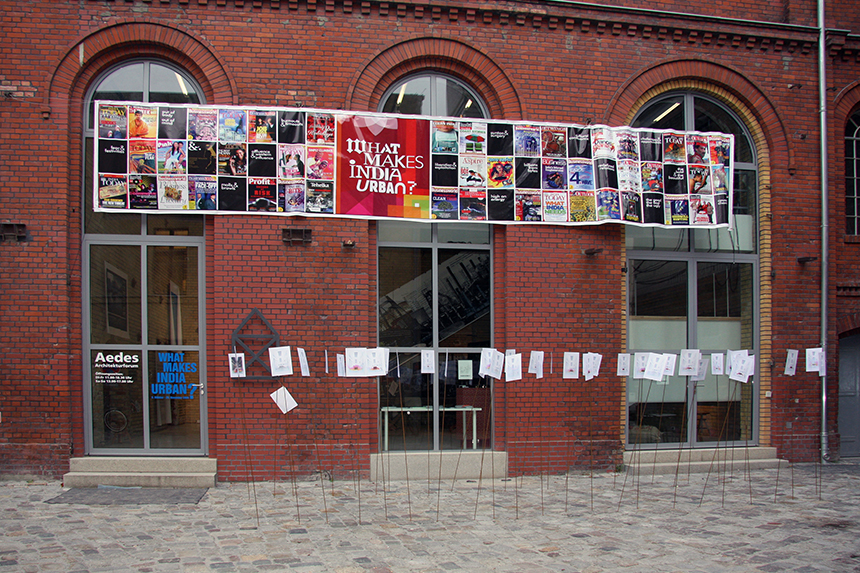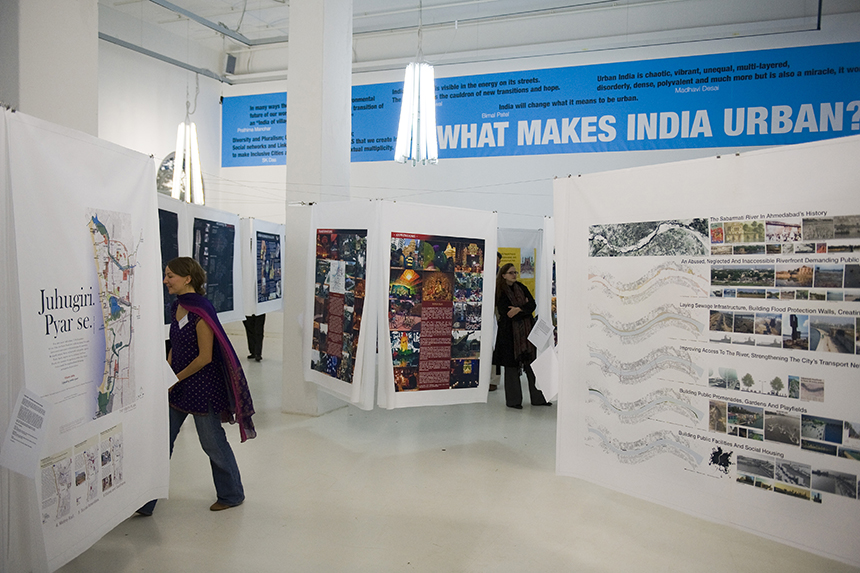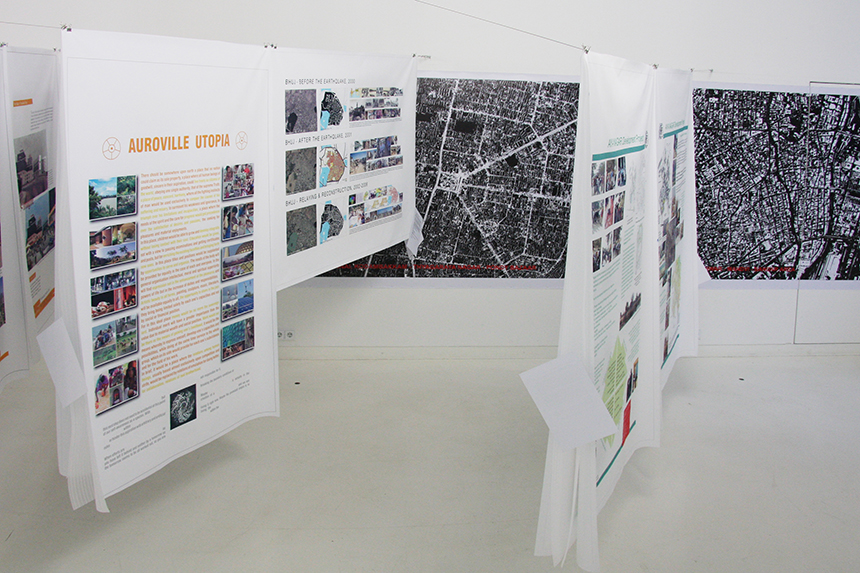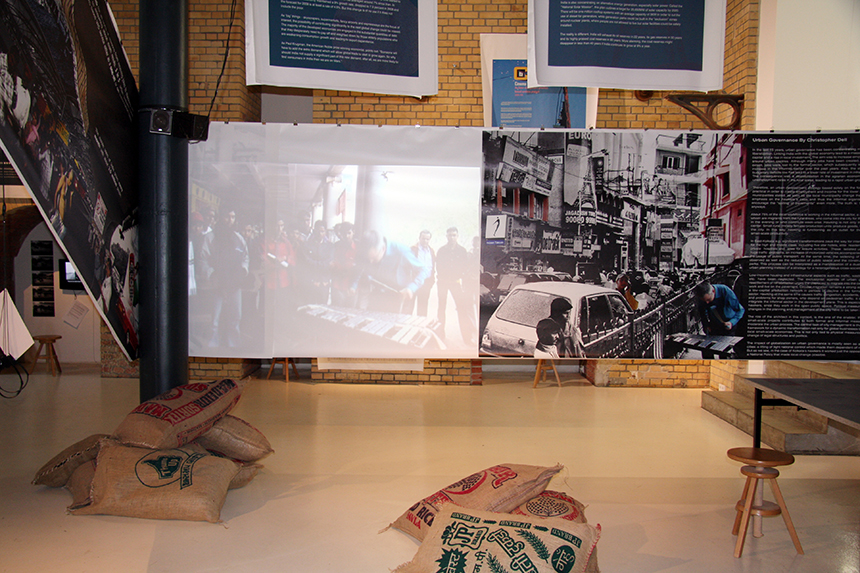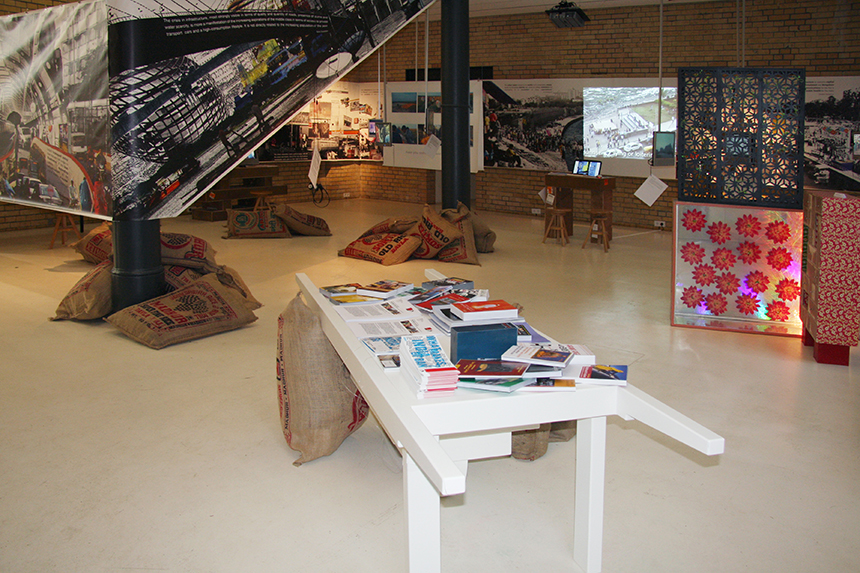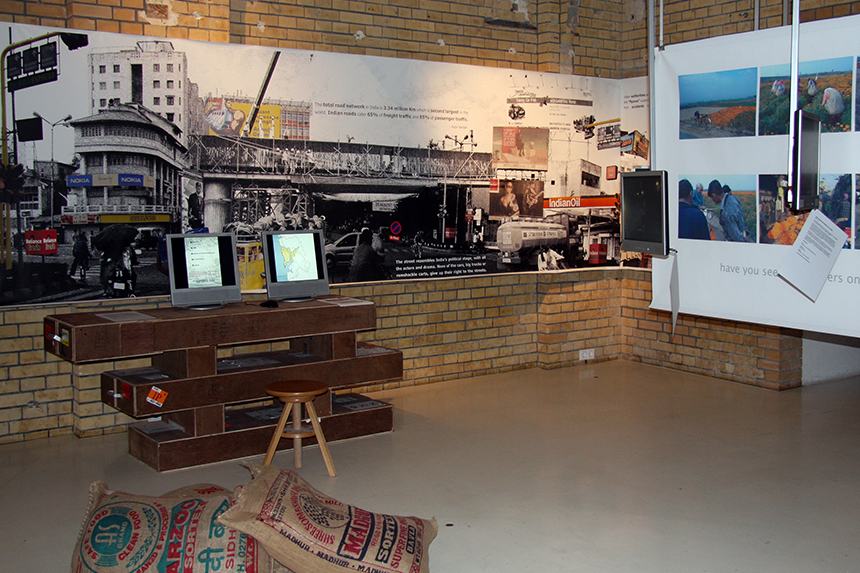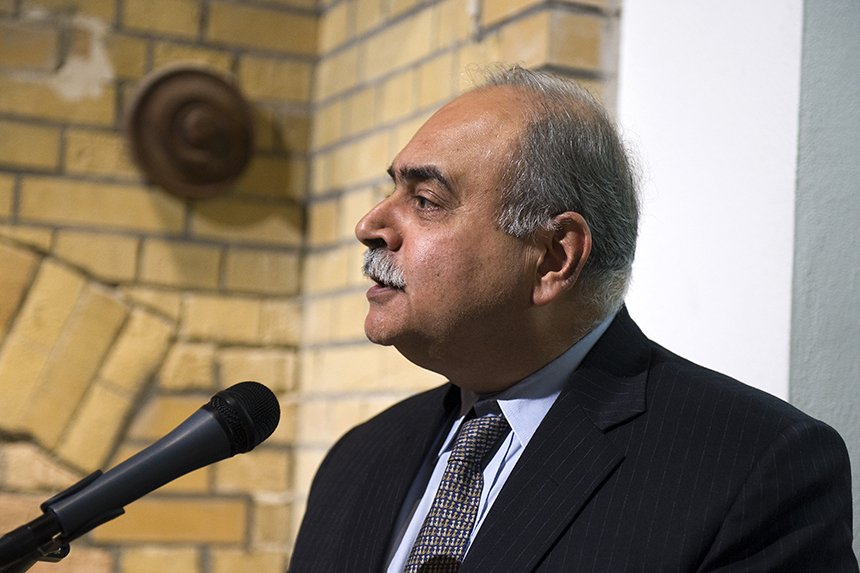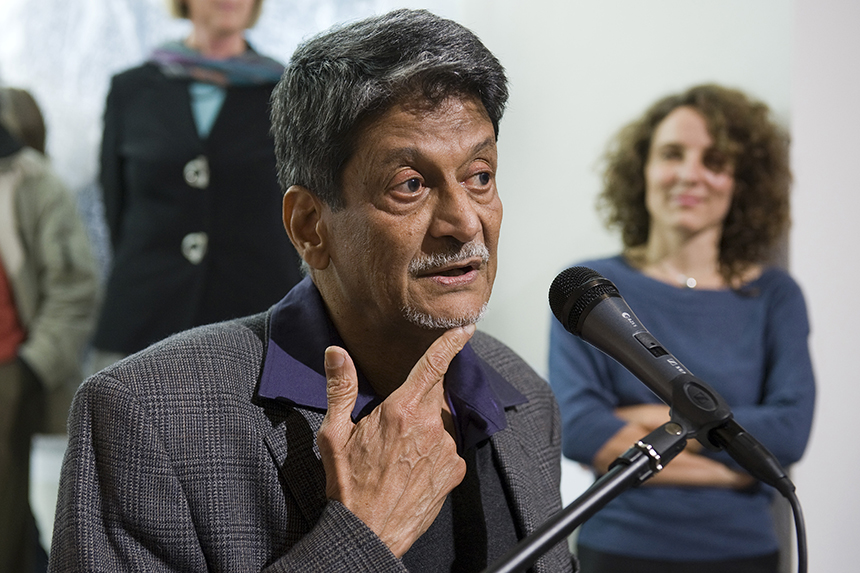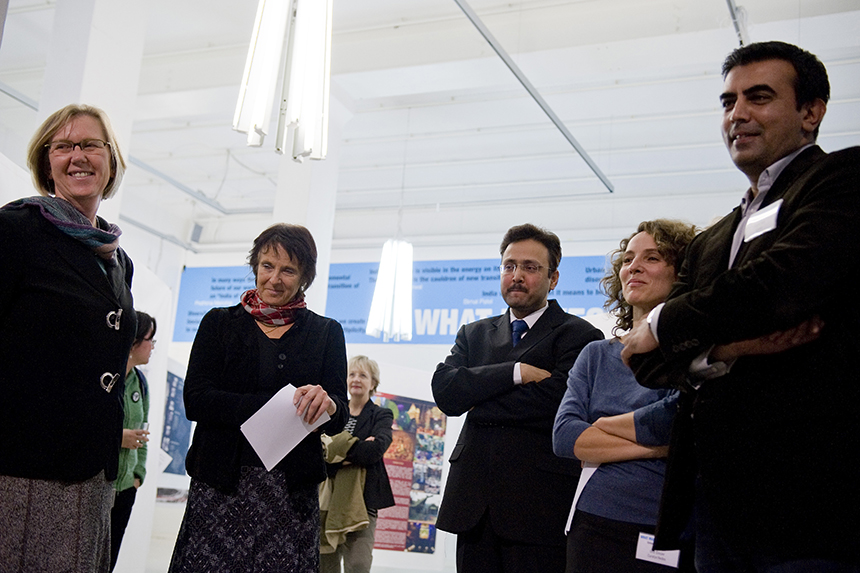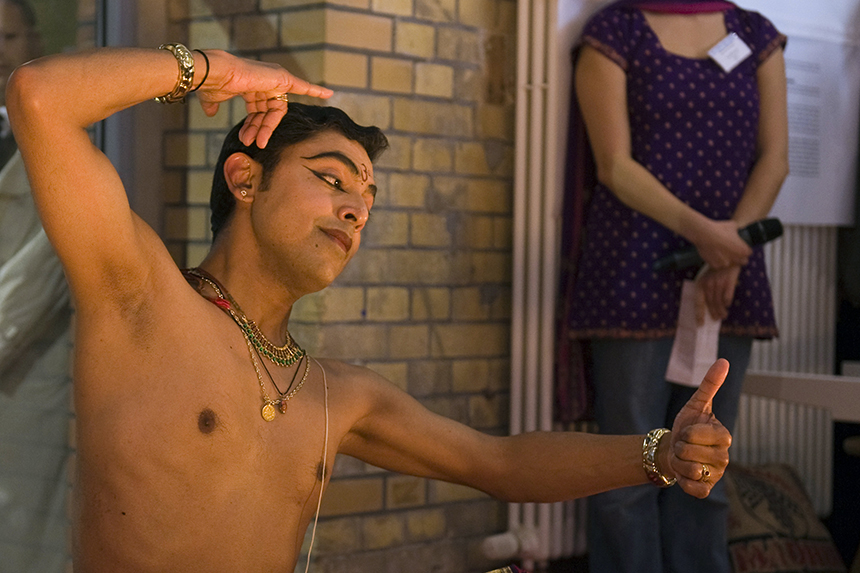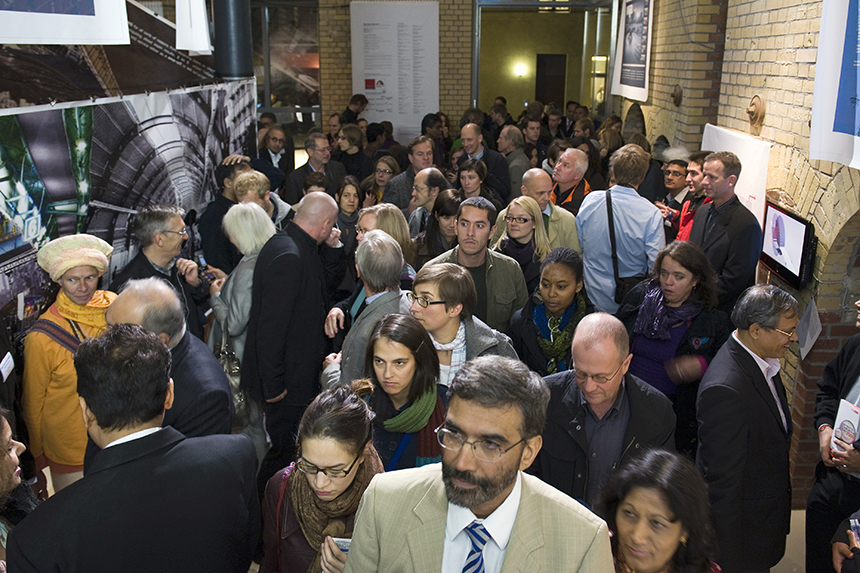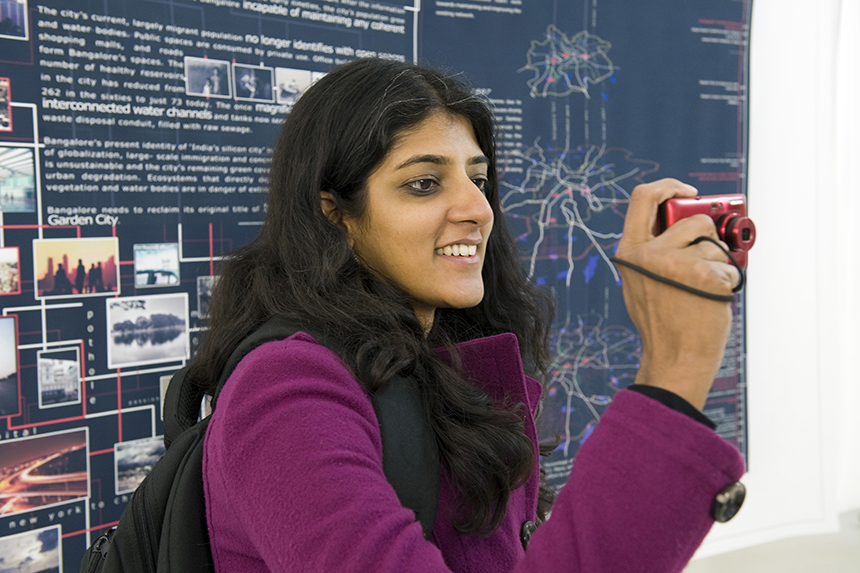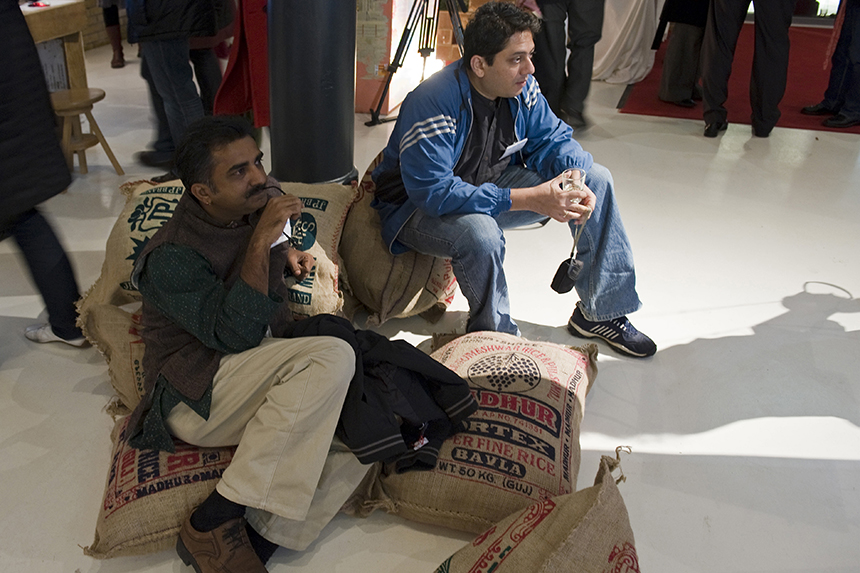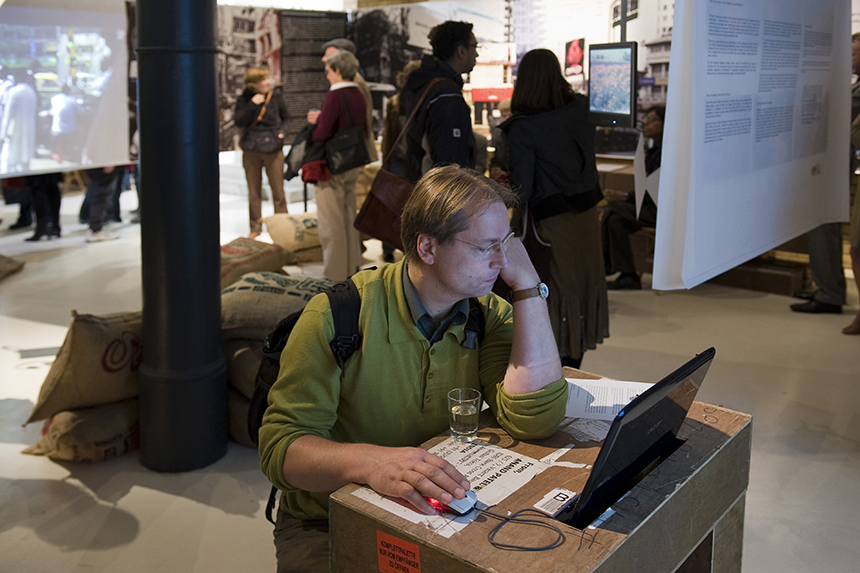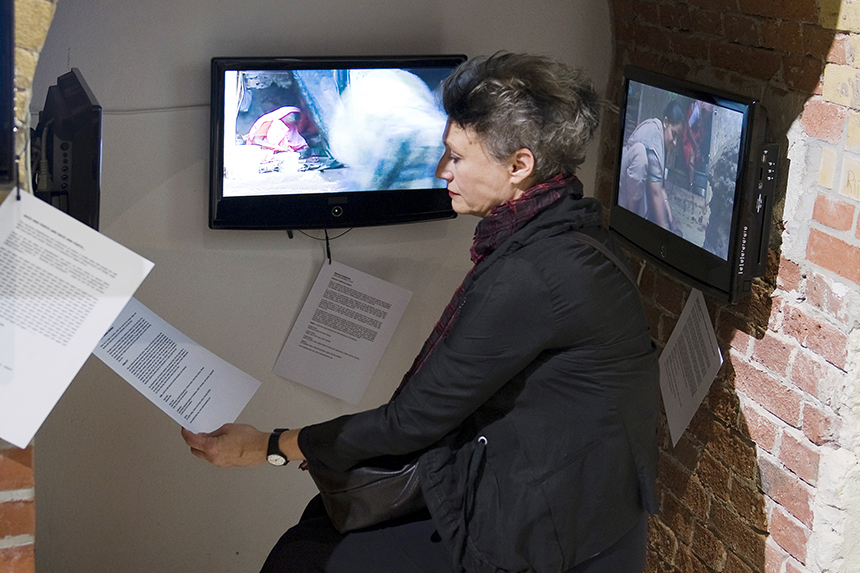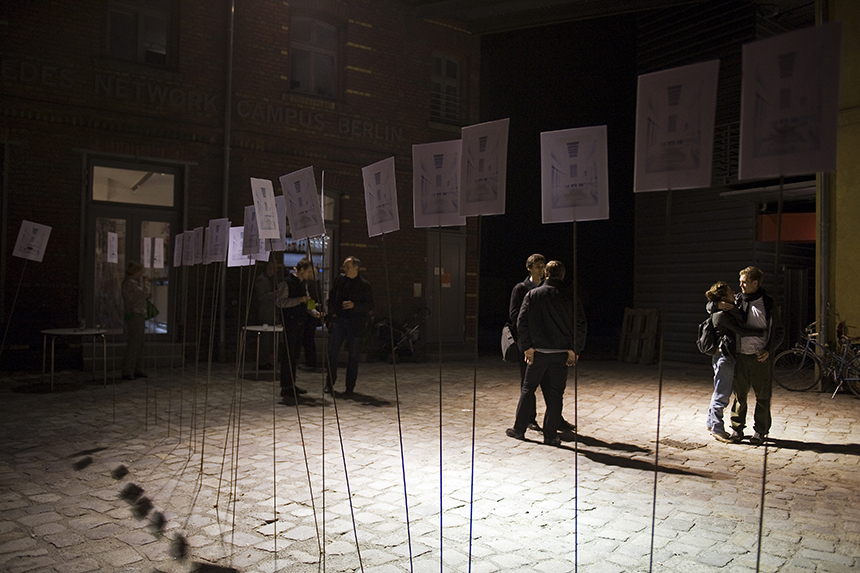The Asia-Pacific Weeks are supported by the Stiftung Deutsche Klassenlotterie Berlin (DKLB).
"What Makes India Urban? Challenges towards Mobility, Infrastructure, Energy and Perpetual Change"
Organizer: Aedes East - International Forum for Contemporary Architecture e.V.
Exhibition location: Aedes am Pfefferberg, Christinenstr. 18-19, 10119 Berlin
Exhibition dates: October 9 - November 26, 2009
Curators: Anand Patel (architect), Ahmedabad / Ulla Giesler (cultural scientist), Berlin
Conceptual collaboration: Christopher Dell, Institute for Improvisation Technology
The exhibition takes place in the framework of the Asia-Pacific Weeks 2009. This year’s thematic focus is “Mobility and Energy.”
• "The soaring aspirations of over 1.2 billion people, is fuelling urbanization in India." Harsh Purohit
• “Planning and Architecture are an effective democratic tool of social change and an instrument for mobilizing social movements for equality and justice.“
• “Cities are not spaces for competition or for individual disparate efforts. To me they are a fantastic opportunity for forging collective and co-operative effort. Active public participation and the engagement of their organizations in the development process truly helps develop an equal city.”
• “As cities are expanding, the public spaces are rapidly shrinking. What is needed is to integrate planning and architecture with larger democratic movements and to use them as instruments for political action and to bring about development justice.” P.K. Das
• "The concentration of people in a closely built network of buildings with a hierarchy of private, semi-private and public space, along with the free flow of different activities from inside to outside, is what defines the Indian City. This is what makes India urban." Ranjit Sabikhi
• "There is no such thing like neutral space. Studying the tacit urbanism, and making explicit the tacit political and cultural levels of the urban becomes an important part not only of understanding the urban as totality but also of how we act as citizens and how we participate in the constitution of urban form." Christopher Dell
• "The imaginary line separating urban India from its rural counterparts is often blurred and diluted - like a watercolor painting - allowing pockets of rural India to co-exist with its urban cousins. Among the tension and strife created by this disparity exists a strong bond of inter-dependence without which, urban India would lose its unique character." Partha Ranjan Das
• "Diversity and Pluralism; Community and Participation; Social networks and Linkages, Spatial Interdependence and Granular textures are URBAN CONDITIONS that we create in our works; to make inclusive cities and an architecture of contextual multiplicity." SK Das
• "India's population is its only qualifier for its seeming semblance of urbanity. Pictures of newly developed world cities colour its desire - the possible death of ' imagination of the future of its civilization' needs conscious pursuit and willful realization." Nisha Mathew Ghosh + Soumitro Ghosh
• "India’s urbanity is visible in the energy on its streets. Here the country’s diversity merges, mingles, and explodes, creating a new exciting possibility of its future. The street here is the cauldron of new transitions and hope." Ravi Agarwal
• "What is a city, but the people; true the people are the city." -- Coriolanus III Adiya Dev Sood
• "The Indian city has become an intrinsic part of the lives and identities of its inhabitants. They believe that progress is to nurture what is their city and defend it against initiatives that promise to reshape it in the image of some distant, glossy, global ideal." Usha Rao +Gautam Sonti • “The environment of man has been sacrificed to the egoistic needs of economy which has imposed a more and more rigid framework of life. Most modern urban realisations are suffering from this and are characterised by the lack of attention to the true needs of man.” Anupama Kundoo Roger Anger, Journal of the Indian Institute of Architects, April –June, 1971
• "India will change what it means to be urban." Bimal Patel
India continues to develop at breakneck speed, and it is not suffering excessively from the current global financial crisis, at least not in the field of architecture. In India as a whole, the same number of architects and urban planners are active as in Berlin alone. They are never short of work, and young architects and architectural students from Europe are in demand! In many cities, the visitor’s first impression is that of new expressways (often with multilingual signage), new railway tracks, and countless construction sites for new water mains: all evidence of the gigantic upheavals prevailing here. Half of New Delhi is being excavated for new metro lines. Why don´t we see anything of this in the German media? A mystery! Deemed worthy of the occasional newspaper article is at most the construction of a new museum containing spectacular collections of contemporary Indian art, or a social critical view of life in the slums. At a recent Congress of Berlin entitled “Beyond Multiculturalism,” Indian anthropologist Arjun Appadurai observed that we are often simultaneously too close and yet too far away from events occurring around the world: “Although in the fall we watched the terrorist attacks in Bombay on television virtually in real time, no one seems to be interested in the positive changes occurring in India over the past few years.”
The exhibition project “What Makes India Urban? Challenges Towards Mobility, Infrastructure, Energy and Perpetual Change” initiated by Aedes and currently being implemented in India – will provide insights into the new urban India and into the complex utilizations of the new spaces being engendered there. The programmatic kickoff to the project was a symposium held in Ahmedabad/India in early May, a forum for architects, city planners, artists, filmmakers, lawyers, and theoreticians to discuss the question: What really constitutes contemporary urban India?
Investigated in the first exhibition gallery under the title “Screened and Narrated Urbanism” will be links between urbanization and cultural change. Audiovisual installations will generate images, sounds, and voices relating to various urban situations, for example to Gurgaon, the special economic zone set directly at the fringes of New Delhi. By means of 20 different projects, the visitors to the exhibition will be offered views into a variety of inhabited environments – from Indian streets to new highways, from emerging satellite cities to impressive skylines – and hence create an impression of the unique spaces and locations offered by urban India.
In “The Story of Gurgaon: As Told by its People”, freelance broadcaster Arti Jaiman and photographer Ajay Jaiman interview and portray the population, with its formerly agrarian orientation, and its attempts to find a place for itself in a restructured Gurgaon. Musician and theoretician Christopher Dell intervenes in the urban spaces of Kolkata with a borrowed vibraphone. The project thematized in the film “Kolkata Monodosis” and in the publication “Tacit Urbanism” is the transformation of urban space in Kolkata brought about by the street vendors and by others active in the informal sector. (“Kolkata Monodosis” was produced in 2008 in the framework of the Artist in Residence Project of the Goethe Institute in Calcutta.)
With the installation Gendered Strategies for Loitering, the artists Shilpa Ranade, Shilpa Phadke and Sameera Khan explore the question of how women experience public space in Mumbai. Public space continues to be male-dominated. Their video game plays ironically with the impossibility of spending time there as a woman. This work poses questions about the risks and potential forms of enjoyment of public space, about civil rights, inviting exhibition visitors to hang out in the streets of Mumbai on the virtual level in order to trace this feeling.
While the first part of the exhibition guides the visitors through the everyday world, the dimensions and cultural specifics of various Indian cities, the second part, entitled “Demystified Urbanism” focuses on the efforts by architects and urban planners to reshape India's cities and to find appropriate methods for doing so. The challenge architects and planners are facing is to recognize preexisting cultural inscriptions and to construct spaces based on these. The selected architectural and planning projects call attention to the infrastructural challenges currently confronting India's cities. The spectrum extends from the preservation of historic monuments all the way to large-scale projects, special economic zones, and new infrastructural initiatives. Among the projects featured by this exhibition are:
• “The Sabarmati Riverfront Development Project” by HCPDPM, Bimal Patel (architect & urban planner, Ahmedabad) The Sabarmati Riverfront Development Project is currently India's largest urban redevelopment project. Along a stretch measuring 24 km, the banks of the Sabarmati River in Ahmedabad are made publicly accessible. The project will make available 180 ha of reappropriated territory for urgently needed public space, pedestrian zones, cultural facilities, as well as residential areas for slum dwellers. The newly created riverbank zone will also provide recreational space and regulate water levels in cases of flooding.
• “Ownership of the City” by Venkataramanan Associates, Naresh Narasimhan (architect, Bangalore) In his projects, Naresh Narasimhan pursues questions concerning relations of ownership in the city of Bangalore and the question of how participation in the city can be returned to the hands of its inhabitants. Over the past 50 years, the state has passed through many hands, from Kempe Gowda, to Hayder Ali, and all the way to the English and present-day officials and politicians. Current residents, including an enormous group of immigrants, should be allowed to determine contemporary relations of ownership in the future.
• “Urbanism and New Communities,” by SK Das (architect, New Delhi) Crossing Township is a residential area measuring 160 ha, with public squares and public spaces for strolling and cycling, leisure and work. It has emerged through an exchange between municipal agencies and surrounding low-income residents. The project was implemented in collaboration with Sasaki of Boston. Meanwhile, the overall plan has received approval, and construction activities are in full swing. The area is situated in Ghaziabad, a city on the outskirts of New Delhi.
Diverse textual material drawn from Indian and German publications and from contemporary Indian literature can be accessed on location at the exhibition. These textual extracts serve as correctives to the collective images stored in our memories, exposing clichés. The literary examples are often characterized by the turnback to the local tradition, to the microcosm of one's personal living environment to stories about the city and about social milieus which may ultimately vanish in the wake of India's globalization and homogenization. Aravind Adiga’s Booker Prize winning novel “The White Tiger” for example, is set in the world of the call center, in the emerging satellite cities with their gigantic malls, their "Gated Communities" and their Indian solutions to traffic problems.
The exhibition is curated by Anand Patel, Ahmedabad, and Ulla Giesler, Berlin, implemented by the participating architects, artists and theoreticians. Our cordial thanks go to all of them for their tireless input and generous contributions, without which this exhibition project could not have been realized.
Catalogue
An Aedes catalogue was published.
ISBN 978-3-937093-08-6
English
Price € 10,-
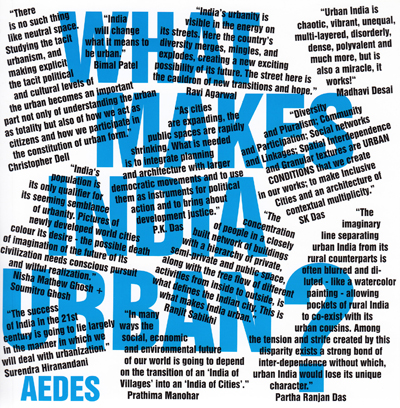
Diese Ausstellung wurde ermöglicht mit der großzügigen Unterstützung von:
